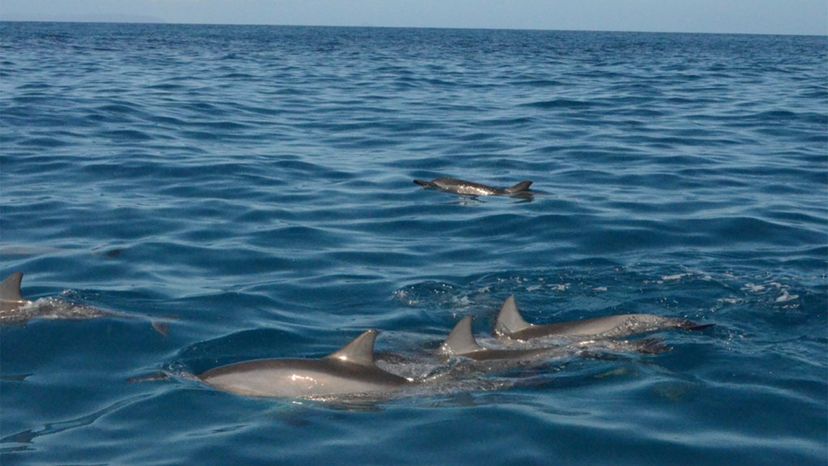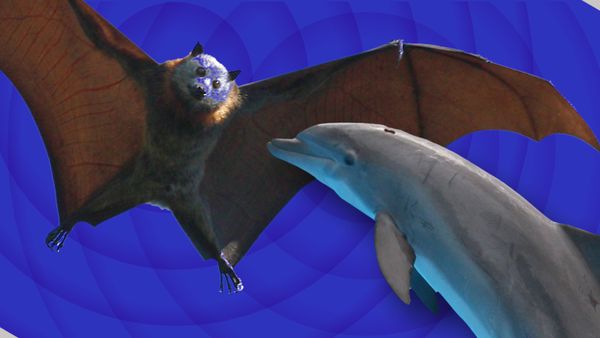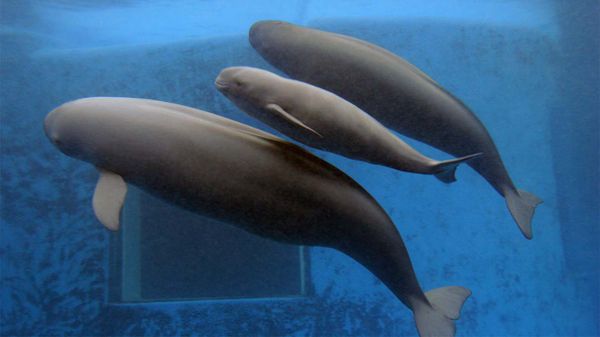
You've heard of "sleeping with one eye open." That's how dolphins catch their Zzzs — one side of their brain stays awake and the opposite eye stays open to watch for danger and rise to the surface to breathe. Meanwhile, the other half of brain sleeps and the opposite eye is closed. After about two hours, the sides switch so the entire brain gets rest. This kind of dolphin sleeping is called cat-napping.
During humans' long hours of unconscious sleep, we aren't aware of our surroundings and we breathe automatically. Dolphins have a voluntary respiration system, which is why they have to keep part of their brain alert to breathe. To avoid drowning, they also have to control their blowhole, a flap of skin that opens and closes to breathe and make sounds.
Advertisement
Dolphins slumber by resting in the water, either vertically or horizontally, or while swimming slowly with another dolphin. They also have periods of deep sleep floating at the surface of the water like a log. This is known as logging.
Normal human respiration is about 12 to 20 breaths per minute. Each dolphin breath is bigger than ours and their red blood cells carry more oxygen, so they don't need to breathe as often. Bottlenose dolphins, for example, can stay underwater for up to 10 minutes.
Young dolphins or calves eat and sleep while their mothers "carry" them directly behind in their slipstream, also known as the wake, which moves the calf at the same speed as the mother, requiring less energy from the calf. Mom can't stop swimming the first few weeks of a baby dolphin's life, otherwise it will sink and drown because it doesn't have enough body fat to float. Good thing mom's able to sleep on the move.
Advertisement


